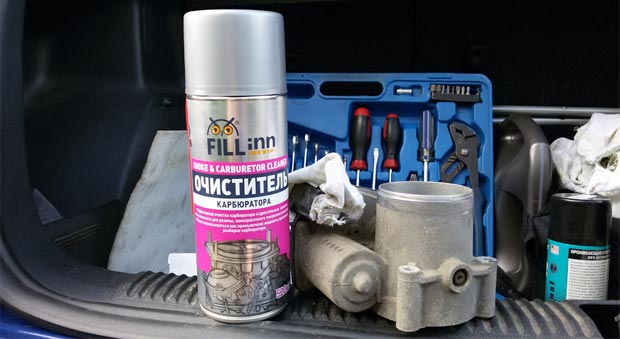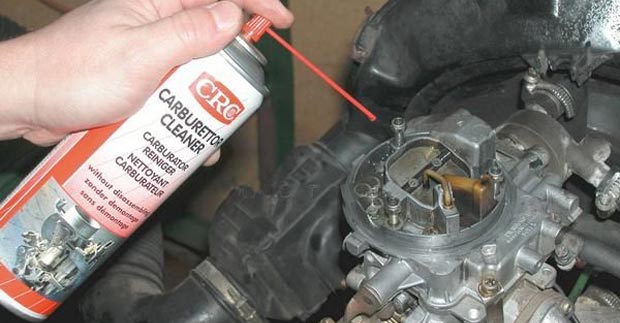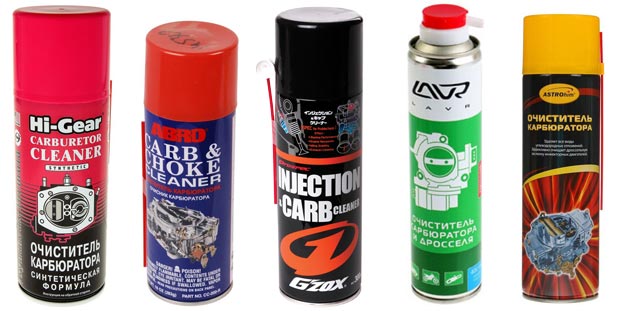
Carburetor cleaner. Composition and rules of use
Without observing safety rules, the ingredients contained irritate the skin and spoil clothes. Knowing what's in a carburetor cleaner gives you a better understanding of why safety should come first.
Composition of carb cleaners
Each of the cleaner's ingredients is derived from petroleum, a chemical compound, or extracted from geological sources.
Acetone. Its use in carburetor cleaners as an effective solvent is as high as 12 percent. Because acetone is flammable, all brands of carburetor cleaners should avoid open flames. Due to its high evaporation pressure, acetone requires the use of carburettor cleaners only in well-ventilated areas.
Xylene. It has an intense, sweet odor and is a clear organic liquid. Derived from petroleum and coal tar, xylene is used not only in carburetor cleaners, but also in the manufacture of chemical products such as paints, varnishes, and shellacs.
Toluene. The other ingredient in all carburetor cleaners is toluene. Perfumes, dyes, drugs, explosives, and detergents are just a few of the products that contain toluene.


Methyl ethyl ketone. In addition to being used in carburetor cleaners, methyl ethyl ketone is the basis for the production of vinyl varnishes. It is also found in adhesives and lubricating oils, and is used in intermediate chemical reactions in the production of antioxidants and perfumes. In carburetor cleaners, methyl ethyl ketone is introduced as a degreasing and cleaning component.
Ethylbenzene. A liquid hydrocarbon that effectively cleans up tar found in dirty carburetors. It is also used as a component of the injector cleaner. In petrochemical intermediates, ethylbenzene is an extremely flammable, clear liquid with a pleasant odor.
2-Butoxyethanol. Glycol alkyl ethers are the main components of 2-Butoxyethanol. In the composition of the carburetor cleaner, this is another ingredient with a strong specific odor. The chemical is also well known as a stain remover and is therefore used as an industrial cleaner.


Propane. It is a natural gas and a by-product of oil refining. It liquefies easily when compressed and cooled, and is used in some types of cigarette lighters, camping stoves, and lamps. Its main use as a fuel (mixed with other hydrocarbons such as butane) does not prevent manufacturers from actively introducing this gas into carburetor cleaners.
Characteristics of common brands of carbcleaners
Cleaning the carburetor primarily concerns its moving parts, which are subject to constant contact with air, and therefore easily oxidized. It is these parts that are subject to periodic cleaning. The mechanism of action of such drugs is that surface deposits and dirt are converted into a soft form, after which they are easy to remove. In addition, the lubricants included in the carburetor cleaners (the same methyl ethyl ketone) help lubricate the moving elements of the carburetor. And antioxidants improve resistance against surface oxidation.


The release of carburetor cleaners is carried out in the form of an aerosol spray or liquid. Accordingly, the way they are used is different. The spray is convenient for manual application, since all spray cans are equipped with nozzles, the length of which makes it easy to process any open area of the knot. Therefore, the aerosol version is most loved by car owners. The liquid version of the application is that the agent is simply poured into the fuel tank. There, the cleaner mixes with the fuel and passes to the carburetor. During engine operation, gasoline is burned, during which the flammable components of the carburetor cleaner are released from the mixture, soften the dirt and subsequently remove it from the surface of the parts. Liquid cleaners thus operate automatically.


- Liquid HiGear, Python.
- Aerosol Liqui moly, Ravenol, XADO, Mannol, Abro, Laurel, etc.
The range of sprays is much larger, which is explained by the convenience of working with them: the aerosol is immediately ready for use, while liquid additives have yet to be mixed with gasoline, and in strictly defined proportions.
Numerous tests carried out with both groups of carburetor cleaners give approximately the same result. The best are recognized: from liquid - HiGear, and from aerosol - Ravenol. Coincide with these estimates and consumer reviews. True, the price of these funds is high, from 450 ... 500 rubles. Cheaper Abro, Lavr, Python (their prices start at 350 rubles) work less efficiently. When recalling, not only the cleaning abilities of the substances were taken into account, but also their ability to lubricate the treated surfaces.


Watch this video on YouTube
